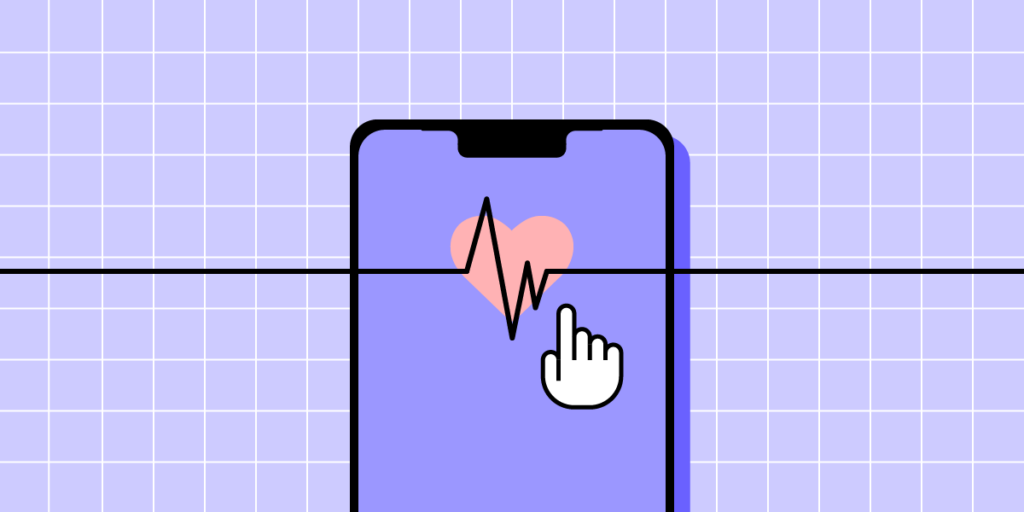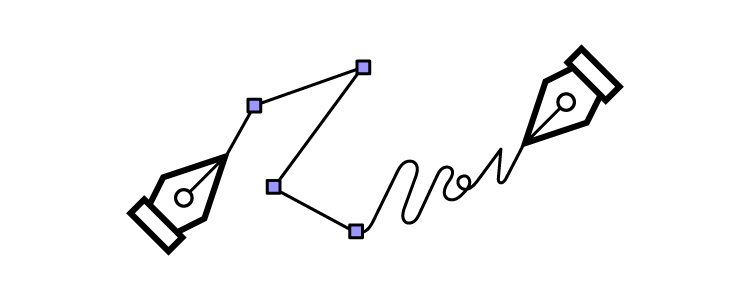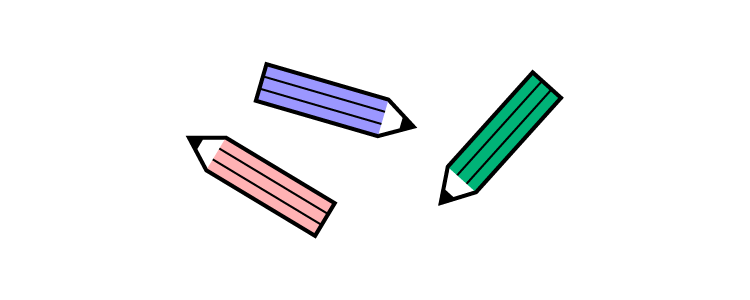Healthcare App Design in 9 Steps – Overcome UX Challenges for Health Industry

Healthcare apps are transforming the patient-care paradigm, offering multifaceted benefits for patients and medical professionals. These apps provide real-time health monitoring, instant communication channels, and many functionalities tailored to individual needs. From secure symptom checkers to instant appointment bookings, these apps elevate the healthcare experience, combining technology with wellness.
Key takeaways:
- Key features of an effective healthcare app include secure messaging, medication tracking, appointment bookings, and interactive symptom checkers.
- Navigating the design challenges of healthcare apps involves addressing regulatory constraints, system integrations, and ensuring stringent data security.Adopting tools like UXPin Merge can optimize the design process, ensuring high-fidelity prototypes that mirror final product functionalities.
Use React components without writing a single line of code to move quicker from healthcare app design to development. Discover UXPin Merge.
What is a Healthcare App?
A healthcare app is a digital tool designed to address health-related needs, from wearables to mobile and web apps. This mobile app technology is especially significant for on-the-go healthcare solutions. From booking doctor’s appointments to monitoring vital signs, these apps streamline health management processes for patients and healthcare professionals.
Designing a healthcare mobile app is a delicate process, considering the importance of the data it manages. Beyond medical interventions, these apps also promote overall wellness by providing resources for preventive care.
Medical applications are crucial in bridging the gap between patients and health services. They provide real-time health monitoring, data-driven insights, and efficient communication channels to improve patient outcomes and enhance healthcare efficiency.
What are the Benefits of a Healthcare App?

Healthcare apps have revolutionized the way patients and medical professionals interact, bringing forth a range of benefits that cater to modern-day healthcare demands:
Benefits for patients:
- Immediate Access: No more waiting in queues; patients can book or reschedule appointments in seconds.
- Health Tracking: Seamlessly track vitals, medication schedules, etc.
- Personalized Insights: Get tailored health advice based on real-time data.
- Secure Communication: Safely discuss health concerns with healthcare professionals.
- Digital Records: Access medical histories, prescriptions, and test results anytime, anywhere.
Benefits for providers:
- Efficient Scheduling: Automate appointments, reducing administrative tasks.
- Real-time Monitoring: Oversee patient health metrics as they come in.
- Data-driven Decisions: Use gathered data for more accurate diagnoses and treatments.
- Improved Outreach: Connect with patients, send reminders, or share health information easily.
- Cost-effective: Reduce overhead costs through automated processes and streamlined workflows.
What are Some Features That a Healthcare App Should Have?

The healthcare tech industry is broad, with many features and user interface design possibilities. Here are some features you might consider based on your product’s purpose, user needs, and goals.
Appointment and procedure bookings
- Instant Bookings: Allow patients to schedule, reschedule, or cancel appointments within moments.
- Smart Calendars: Integrate doctor schedules so patients view real-time availability.
- Notification Alerts: Send reminders for upcoming appointments or procedures to reduce no-shows.
- History Tracking: Record past appointments and procedures for easy reference.
Remote consultations
- Video Consultations: Enable face-to-face consultations without physical constraints.
- Secure Messaging: Offer encrypted chat options for patients to discuss health matters privately.
- File Sharing: Facilitate the secure exchange of medical records, lab results, or images.
- Billing Integration: Process payments for online consultations.
Medication Tracking and Reminders
- Digital Prescription Lists: List down medications prescribed with their timings and dosages.
- Timely Alerts: Notify patients when it’s time to take their medications.
- Refill Reminders: Alert patients when they need to refill a prescription.
- Dosage Information: Provide details about each drug, its side effects, and interactions.
Symptom checkers:
- Interactive Questionnaires: Guide patients through questions to evaluate their symptoms.
- Immediate Triage: Based on symptoms, suggest if a user should seek immediate care, consult remotely, or book an in-person visit.
- Integration with Professionals: Facilitate a quick consultation booking if a symptom indicates urgency.
- Educative Content: Provide relevant information about the identified symptoms, potential causes, and preliminary care steps.
What are the Challenges of Designing a Healthcare App?

Healthcare apps offer design teams more challenges for patient and provider-facing interfaces than the average digital product. Designers must navigate the regulatory constraints and complex system integrations. Here are some key challenges to consider and plan for.
Regulatory and Compliance Considerations
Healthcare app design offers many challenges and complexities in processing and storing user data–the most sensitive and protected information globally. Here are some things designers must consider to stay compliant.
HIPAA and Data Privacy:
- Strategy: Prioritize user data safety from day one. Design the app structure so sensitive patient information remains encrypted in transit and at rest.
- Consideration: Understand HIPAA’s guidelines and make the app infrastructure compliant, ensuring that third-party integrations adhere to these standards.
FDA and Medical App Classifications:
- Strategy: Clarify the app’s medical classification, as it sets the foundation for regulatory compliance.
- Consideration: Is the app intended for diagnosis or treatment? Does it influence medication? Answers dictate FDA requirements and oversight.
Global Considerations:
- Strategy: Adopt a globally-aware design stance. Familiarize yourself with varying healthcare rules in targeted regions.
- Consideration: Countries differ in healthcare regulations. An app successful in the U.S. might require modifications for the EU due to the GDPR.
Integrating with existing systems
Healthcare product developers must deal with complex integrations and systems, each with rigid security and restrictions. Here are some of the systems designers must consider and research.
Electronic Health Records (EHR):
- Strategy: Seamless data flow is vital. Ensure the app can effortlessly pull and push data from and to EHRs.
- Consideration: Beyond integration, think about data accuracy and real-time updates. Mobile app users shouldn’t experience information lag.
Pharmacy systems:
- Strategy: Create an intuitive bridge between the app and pharmacy databases, ensuring quick medication data access.
- Consideration: Can users easily order or refill prescriptions? The smoother this process, the more value the app offers.
Insurance and billing platforms:
- Strategy: Financial elements in healthcare can be intricate. Simplify the design to allow straightforward navigation of insurance claims and billing details.
- Consideration: Offer summarized views, detailed breakdowns, and instant support options for financial queries.
Ensuring security and trust
Healthcare apps must have security features and protocols comparable, sometimes stricter, than banking or finance apps. Designers must incorporate features that secure app access while reassuring users their information is safe. Here are some considerations for designing robust healthcare applications.
End-to-end encryption:
- Strategy: Design the app with a security-first mindset. Use robust encryption methods to safeguard patient data.
- Consideration: Every piece of patient information, no matter how trivial, needs protection. Never compromise on encryption.
Multi-factor authentication (MFA):
- Strategy: Incorporate MFA to provide an additional security shield, deterring unauthorized access.
- Consideration: While MFA enhances security, ensure the process remains user-friendly and not overly complex.
Transparent data practices:
- Strategy: Be upfront about how the app uses, stores, and shares data. Design a clear, concise privacy policy and make it easily accessible.
- Consideration: Trust is hard to gain and easy to lose. Be open about data practices; users will be more inclined to trust the app.
Accessibility and inclusivity
Accessibility and inclusivity are paramount for healthcare app development because their purpose is to serve everyone. Understanding user needs and limitations is crucial to ensure user interfaces accommodate all user groups.
Implement WCAG (Web Content Accessibility Guidelines) Standards:
- Strategy: Aim to comply with WCAG 2.1 AA standards as a minimum benchmark.
- Consideration: Utilize accessibility tools like axe or WAVE to evaluate the app’s accessibility levels. Rectify identified shortcomings.
Voice command integration:
- Strategy: Enhance usability by incorporating voice command functionalities, beneficial for visually impaired users and those with motor disabilities.
- Consideration: Integrate with voice recognition platforms like Google’s Speech-to-Text or Apple’s Speech framework.
Captioning and transcripts:
- Strategy: Provide captions and transcripts if your app uses audio or video.
- Consideration: Collaborate with transcription services like Rev or use automated tools like Otter.ai. Ensure accuracy and clarity.
Provide Keyboard Navigation:
- Strategy: Ensure the app is navigable via keyboards for users with motor disabilities.
- Consideration: During development, enforce tab order and keyboard focus rules.
Language and localization:
- Strategy: Consider non-native speakers. Offer multiple language support and ensure clarity in translations.
- Action: Collaborate with localization services. Avoid direct translations–context is crucial.
How to Improve Healthcare Product Design With UXPin Merge
Step 1: UX Research and gathering requirements
Start by understanding the healthcare domain and your target audience. Conduct surveys, interviews, and field studies with end-users and healthcare providers to gather insights. Engage with experts from the healthcare industry for deeper insights. This research will guide the design process, ensuring the app meets user needs and regulatory requirements.
Step 2: Sketching and paper prototyping
Map user journeys, sketch UIs, and create paper prototypes of user flows to develop ideas and insights to guide the digital design process.
Step 3: Digital wireframing in UXPin
Use UXPin’s built-in User Flows library to design the app’s information architecture. Draft a wireframe version of the app’s interface. Map user flows and layouts using UXPin’s Forms and Shapes to identify structure and navigation.
Step 4: Choose a design system that meets your needs
Import React or other JavaScript framework components directly into UXPin using Merge. You can also use one of UXPin’s built-in Merge libraries to begin prototyping immediately, including Fluent UI, Ant Design, MUI, and Material UI.
Using code components during the design process helps maintain UI consistency while streamlining designer/development collaboration.
Step 5: Create high-fidelity mockups
This phase emphasizes refining the app UI to make it intuitive and visually appealing. Transition from wireframes to high-fidelity interactive Merge components.
Merge creates a drag-and-drop environment with styling (fonts, colors, sizing, etc.) and interactivity (states, APIs, etc.) programmed into UI elements–far better than any UI kit in Figma or other image-based UI design tools. These Merge components mirror those in the final product and ensure your designs align with what’s feasible in development.
Step 6: Interactive prototyping
Implement screen transitions, navigation, animations, and interactivity using UXPin’s Interactions. Set component-level states, styling, and interactivity via UXPin’s Properties Panel. Merge pulls these properties from the component’s props defined in the design system’s repository, so designers and engineers work within the same constraints.
Step 7: Gather stakeholder feedback
Share interactive prototypes with stakeholders to gather feedback. Stakeholders can view and interact with prototypes and annotate feedback using UXPin’s Comments. They can assign comments to specific team members who mark them resolved after appropriate action.
“Our stakeholders can provide feedback pretty quickly using UXPin. We can send them a link to play with the prototype in their own time, and UXPin allows them to comment directly on the prototypes. UXPin’s comments functionality is great because we can follow along and mark comments as resolved once we address them.” Erica Rider, Product, UX, and DesignOps thought leader.
Step 8: User testing:
Using Merge’s interactive components for testing means users and stakeholders can interact with prototypes like they would the final product. These realistic user experiences give design teams valuable, actionable insights to iterate and improve, allowing them to solve more usability issues during the design process.
Share the interactive designs with a varied group of testers. Capture their feedback to pinpoint areas of improvement, ensuring the healthcare app’s user experience is intuitive and caters to the needs identified during your initial research.
With UXPin’s Mirror app, you can test prototypes on iOS and Android devices to ensure designs meet platform-specific needs and requirements.
Step 9: Design handoff to developers
Document your component usage, design guidelines, and best practices for developers and future projects. Using React components in the design process means devs require less documentation and explanation. UXPin produces production-ready JSX so engineers can copy/paste to start development. This streamlined process paves the way for smoother app development.
UXPin is a full-stack UI/UX design tool with everything design teams need to execute complex projects like healthcare apps. Merge technology enables designers to prototype with code components and get meaningful insights to iterate and improve while enhancing collaboration with engineering teams.
Bridge the gap between design and development to simplify complex interactive digital products with UXPin and Merge technology. Visit our Merge page for more details and how to request access.




